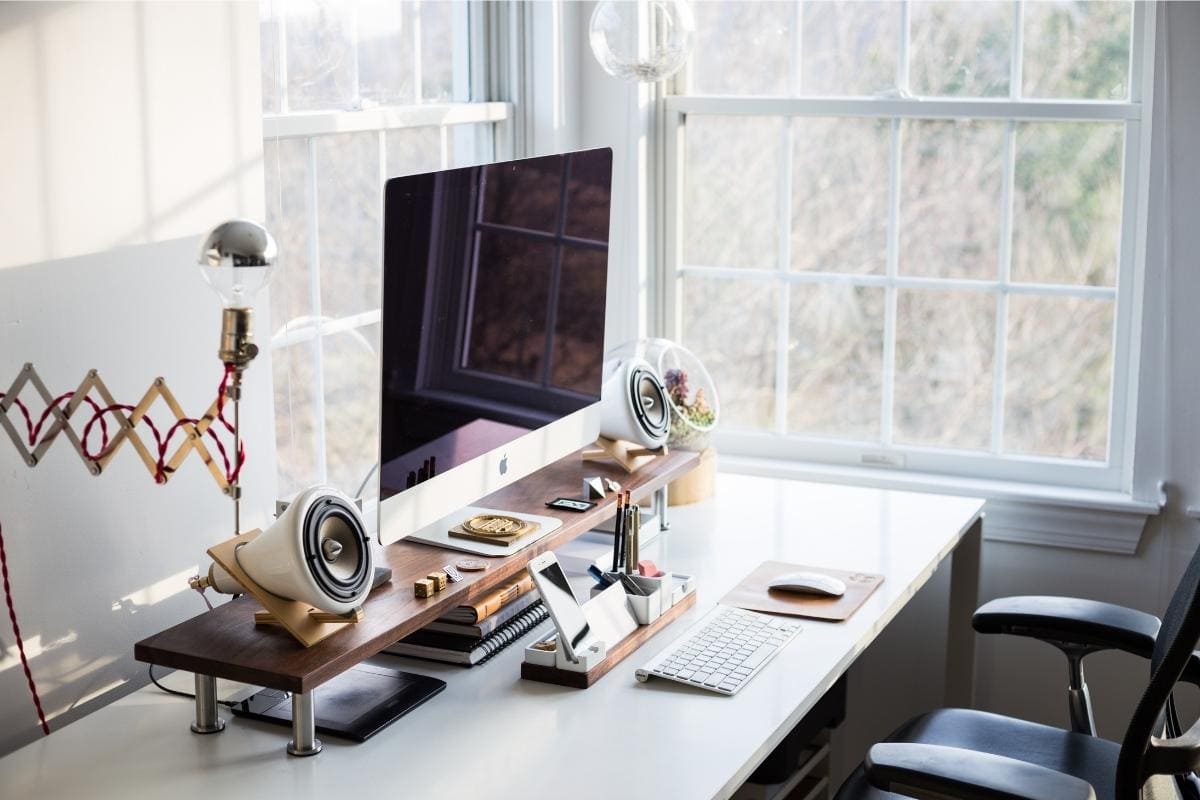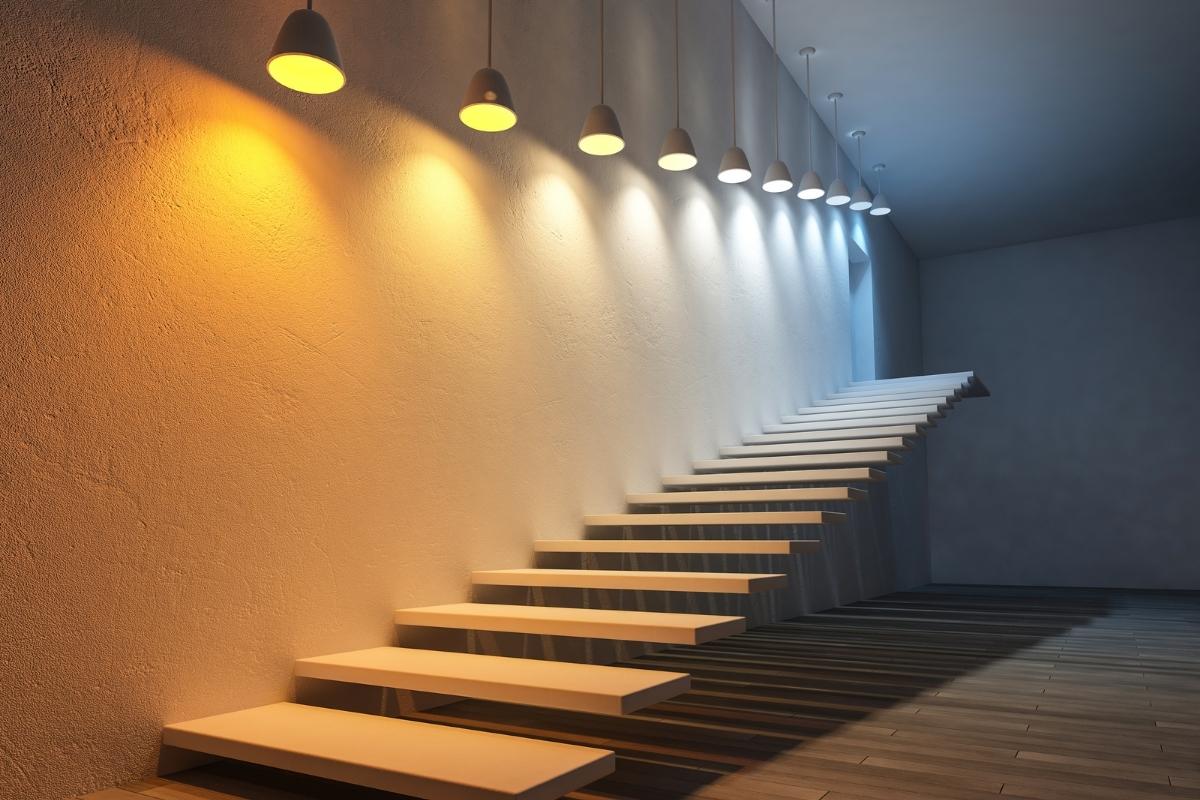The way we work and businesses operate is changing, and a majority of jobs, services, and products can be done entirely online, such as software developers, SaaS services, and digital goods. More and more people are willing to and have the opportunity to work at home now and are able to deliver 100% of their work without leaving home. It’s also beneficial for both employees to reduce commuting time and employers to lower their rent costs to work from home.
However, when working from home, it’s crucial to have your working environment separate from your living environment, or it might drastically distract you and cut down your productivity. Obviously, the more distractions you have, the less productive you’ll be. So, how can you set up your home office in a way that will help you work better?
The best-case scenario for a home office is to have a spacious, secluded, quiet, and comfortable place, for instance, an attic or a basement, to separate your profession from your personal life successfully. An independent home office can help you 100% focus at work in the home office area while fully relaxed in the living area. The shift from work to home life can be fairly quick.
When it’s not possible for you to have an entire room to be used as a home office, don’t be sad. Any unused corners where it’s possible to place a desk or table will be enough to be used as the work area. A folding screen is beneficial to separate you from the world, and it could also act as an inspiration board. When the space is tight, look for multifunctional pieces of furniture and make smart use of the vertical wall space. Also consider customizing the shelves to meet your needs.
No matter which type and size of the home office you have, it’s necessary to have a comfortable, functional, and well-organized workplace that meets all business and office needs that promotes productivity and efficiency.
Here is some advice on the essentials for a comfortable home office that can boost your productivity.
A Work Surface
The office desk should accommodate your computers, laptops, and other equipment and be sturdy enough to support it. An adjustable table is better, so you can place your computer equipment at a comfortable height. The surface should be made of a material that’s easy to clean, and it should be easy to wipe off.
Proper Seating
If you spend a considerable amount of time in your home office, think ergonomically and invest in a good office chair with a backrest, cushioned seat, swivel base, adjustable armrest, and height feature.
It could be expensive, but an uncomfortable chair can hurt your back and cause discomfort and pain. Undoubtedly, a comfortable chair will help you focus and perform better at work.
Sufficient Storage
In order to properly organize files, papers, and office supplies, efficient storage is needed in your home office. Cabinets, shelves, office desks or even armoires with built-in drawers can be some good options.
You could also improvise with different containers placed on open shelves or under the desk or even repurpose furniture. Nightstands with drawers could serve as printer stands and provide storage for printer paper and other office supplies.
Efficient Lighting
Always bear in mind that the lighting of your home office can have a considerable effect on your productivity and fatigue levels for at least two reasons.
First, if you do not like your workspace, lighting could definitely enhance its atmosphere. And second, lighting problems, like glare, dim light, or too bright light, can add extra strain on your eyes and leave you feeling exhausted.
Here are some tips for how to brighten your home office with proper lighting:
Natural Light
Let in the light. Sunlight is much softer and calmer than the artificial light and could really improve any environment. Do not overlook the unique benefit of natural light coming from a window, skylight or another portal. Try to move your desk as close to the windows as possible to take advantage of the natural light during the daytime.
On the other hand, direct sunlight creates an overwhelming glare during certain hours of the day, and a simple blind or even a standing screen will do a great job of diffusing sunlight shining into a window.
Where the Light Comes From
Start by providing proper general lighting with floor lamps, wall sconces, chandeliers, or other overhead lights that could fill most of the work area. For reading, writing, and computer work, add task lighting with well-placed track lighting, pendants, or table lamps that can provide concentrated lighting to your specific work area. For example, two large ceiling light fixtures with LED lights placed to the right and left sides of the desk can provide plenty of well-diffused general lighting while eliminating the shadows on the desk.
In general, always consider where your light is coming from. Lighting placed in front of a desk causes troublesome reflections. For instance, as you work at your computer, a source of light set behind you will certainly create an annoying glare on your monitor. Try to position all lights so that their bulbs do not reflect on the computer screen. If you are right-handed, place the desk lamp on the left side of the desk to prevent casting shadows across the table.
Avoid working under the direct glare of overhead lights because it causes eye fatigue and strain and reduces productivity. Look for ways to diffuse the light that illuminates the office space to prevent creating glare and contrast and casting shadows. Desk mounted task lights and flexible desk lamps are always a great option to provide the light you need.
Avoid Bright Lighting on the Monitor
Lighting has enough power to make any space bright, airy, and productive. Suitable lighting will never strain your eyes while working on the computer, and working in an inadequately lit space results in eyestrain and headaches and ultimately impairs your ability to work effectively.
So, pay close attention to workspace illumination. To prevent eye strain, your computer screen should be brighter than the general light in the room but should never be the only source of light in the space. If the room has windows, place the computer monitor perpendicular to them to reduce glare.
Colors
White or light-colored walls and furniture make the space bright and airy, and you need lower intensity light and fewer lighting options. Generally, the rule is to light a dark office about 20 percent brighter than you would if the walls and furniture were light-colored.
Layers of Light
Always keep in mind that a good lighting scheme uses layers of light for the most efficient and aesthetically pleasing design strategy.
Create layers and angles of light, try indirect lighting, consider using dimmers, and put light sources at different heights to control the intensity of lighting.
Another option is to wash the walls with light. This is a great lighting technique because the wall itself becomes a source of light, thus preventing the eye strain from the contrast between a brightly lit computer screen and a dim home office.
Dimmer Switches
Dimmers are ideal for changing the mood of a room and therefore can help you create different atmospheres for your work and home life. Your home should be a place of relaxation and enjoyment, a place where you can socialize and entertain. If you have dimmer switches installed, you can change the lighting to suit what you are doing and create a romantic atmosphere with dim lighting for entertaining or dim the lights when you are watching a movie. Dim lighting instantly changes the mood of a room and lets your senses know you can relax and unwind.
On the other hand, when you’re at work, you need to be focused and fully engaged in the work you’re doing. With the help of a dimming switch, you can create bright lighting to get in the work mode. Bright light wakes you up and sharpens your senses, making it easier for you to concentrate. You can modify your dimmer switch so that the lighting emulates office lighting, and it will help create an aesthetic barrier between your relaxation time and your work time.
Dimmers are an inexpensive and effective way to get the most out of working from home and will not only benefit your work life but also will help make your home a more beautiful place.
Add Decorative Lights
Consider adding accent lighting for providing visual interest, for instance, LED picture lights or overhead track lighting, to highlight pictures or other pieces of artwork hanging on the walls, elements of the décor, and professional certificates.
An attractive living plant that brings in fresh oxygen in your workspace could also be accentuated to become the focal point of your office.
Credences could be illuminated with slim under–cabinet energy-efficient LED lights mounted as close to the front of the cabinet as possible to avoid glare.
More Tips That Might Be Helpful
- Clear the pathways for more space
- Declutter both the space and the desk. Improve your organization by throwing away things you have not touched in a year and filing away important papers or items sitting in piles throughout the space. Remember: if you cannot find it, you cannot use it, which means that your file folders have to be labeled and your office supplies should be kept in the place designated for them, for instance
- Keep your furniture simple and add color with accessories for a bright modern vision
- Where possible, try to use LED bulbs for greener lighting
Conclusion
Just because it is work does not mean it has to be boring. Consider your needs carefully and plan wisely how to furnish your workspace, as the right home office design can help you create a lively work atmosphere, thus reducing stress and improving your productivity and efficiency.
Your office space is not all about work, and there should also be things that inspire or motivate you. So bring in items you love, add small details such as matching storage boxes or pretty pictures on the wall to add a sense of calmness and informal touch. Give your eyes something attractive to rest on from drawings by your children, photos of family and friends, a colorful calendar, or even a living blooming plant if the space allows.









